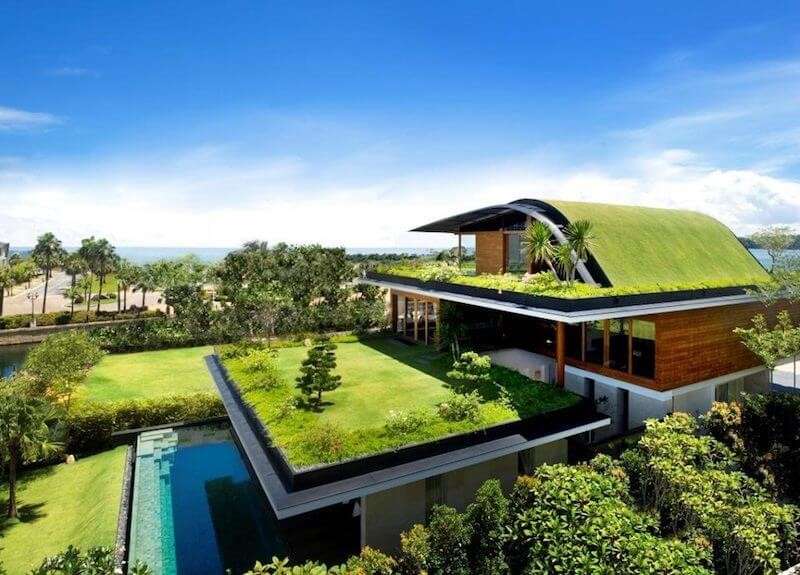A significant shift towards sustainability is occurring in the building sector due to growing environmental concerns. With more people becoming aware of how much the construction sector affects the environment and feeling pressure to take action to lessen that impact, the idea of eco-friendly construction has become very popular in recent years.
Conventional building methods frequently cause significant environmental harm. The construction industry has played a major role in contributing to carbon emissions and resource depletion through various processes such as resource extraction, energy-intensive production, and giant volumes of garbage generated during building. But as cutting-edge methods and technological advancements open the door to a more sustainable future, the paradigm is changing.
Green building, or eco-friendly construction, is the term for a variety of methods and ideas that try to lessen a building’s environmental impact over the course of its existence. Using sustainable resources is one of this approach’s main tenets. Reclaimed wood, bamboo, recycled steel, and engineered lumber are examples of renewable resources that builders are using more and more to reduce their environmental effect and lessen their dependency on finite resources.
In addition, the design stage is crucial to green building. In order to lessen their dependency on fossil fuels and the carbon footprint of buildings, architects and engineers are adopting energy efficiency concepts, using passive design techniques, and incorporating renewable energy sources like solar or geothermal heating.
Beyond the building’s completion, eco-friendly construction involves significant attention to indoor air quality, waste management, and water efficiency. Modern HVAC systems, rainwater collection, greywater recycling, and other technologies all play a major role in cutting water use, enhancing building efficiency, and providing a healthier interior environment for building occupants.
Moreover, retrofitting and adaptive reuse have become increasingly popular concepts. Renovating and repurposing existing buildings to suit current standards is a more resource-conscious option than dismantling them; it also preserves the historical and cultural significance of these structures.
There is growing evidence that eco-friendly building has economic benefits. Green buildings are an affordable investment because of their long-term savings in operating expenses, energy efficiency, and lower maintenance costs, even though their initial costs may be slightly higher. Furthermore, incorporating sustainable practices frequently raises market value and improves tenant happiness.
There are obstacles in the way of the broad adoption of eco-friendly construction practices, such as the need for increased public awareness, technology developments, and policy assistance. Governments and regulatory agencies are essential in encouraging sustainable building practices by offering tax breaks, financial aid, and strict environmental guidelines.
There is a fundamental change occurring in the building industry towards eco-friendly approaches as the need for sustainable infrastructure grows. The industry is moving toward a more sustainable future via stakeholder collaboration, technical innovation, and a shared commitment to environmental stewardship.
To sum up, environmentally conscious building is a critical first step in reducing the built environment’s negative effects on the environment. Through the adoption of sustainable materials, inventive design, effective resource management, and a comprehensive building approach, the construction sector can establish the foundation for a future that is both resilient and sustainable for future generations.

As the editor of the blog, She curate insightful content that sparks curiosity and fosters learning. With a passion for storytelling and a keen eye for detail, she strive to bring diverse perspectives and engaging narratives to readers, ensuring every piece informs, inspires, and enriches.










